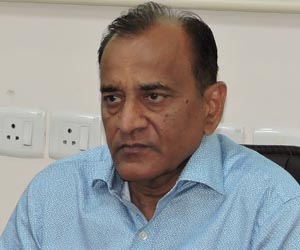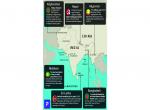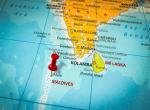It would appear from statements by certain political leaders that Article 370 is the critical element which binds Jammu & Kashmir with India. Former State Chief Minister and Peoples Democratic Party chief Mehbooba Mufti says that the withdrawal of this provision will render India as an “occupational force” in Kashmir, like Israel is considered in Palestine. She threatens that the relationship between Kashmir and the rest of India would become “illegitimate and illegal”. The National Conference’s viewpoint is not very different. The Congress party has vowed in its manifesto that Article 370 would not be touched. However, senior Congress leader Karan Singh has reiterated that Article 370 has nothing to do with Jammu & Kashmir’s integration with India. The Bharatiya Janata Party’s long-held stand is not in favour of Article 370. Various other methods, including the invocation of religion, have been deployed by the proponents of the provision to justify its continuance. Mufti has alleged that the opposition to Article 370 is to “attack the Muslim character of the State and to change the State’s demography”.
Not just Article 370, but also Article 35A, which too is Jammu & Kashmir specific, has become a bone of contention. The State’s regional parties, as also the Congress and much of the Opposition, have opposed its repeal. On the other hand, senior BJP leader and Union Finance Minister Arun Jaitley has termed the provision “constitutionally vulnerable” and has said that it had hurt the ordinary citizens of the State “the most”.
In an election season, facts are often victims in the battle of perception. They are buried or ignored or twisted to suit a particular narrative. The truth of Articles 370 and 35A, therefore, need to be presented as it is. This is all the more relevant given that these provisions are being used to whip up strong public sentiments — some of which are dangerously close to questioning the nation’s integrity — with a view to garnering votes.
The first truth is that the Instrument of Accession that Indar Mahander Rajrajeshwar Maharahdihiraj Shri Hari Singh signed, opting to go with India, was no different in content from that executed by the other 500 odd princely states. It was absolute, voluntary and unconditional. The executed accession document bound the State of Jammu & Kashmir to India both legally and constitutionally. Maharajah Hari Singh’s acceptance came on October 27, 1947 and was conveyed in writing to the Governor General of India, Lord Louis Mountbatten. In this letter, the Maharajah said the alternative to not signing the Instrument of Accession to “leave my State and my people to freebooters”. He was referring to the invasion from the Pakistani side. Pleading with the Government of India, he added, “If my State is to be saved, immediate assistance must be available at Srinagar.” As we know, that assistance came promptly and Kashmir became part of the Indian Union. The accession was not subject to any future provision to either maintain or promote Jammu & Kashmir’s ‘special character’ or vest it with powers that other princely States which similarly integrated with India.
A little mischief did get played when Lord Mountbatten wrote a personal letter to the king after accepting the Instrument of Accession, in which he said the following: …it is my Government’s wish that, as soon as law and order have been restored in Kashmir and its soil cleared of the invader, the question of the State’s accession should be settled by a reference to the people.” This letter was used by those who had qualms about the accession, to claim that the accession was conditional to a public referendum. This bring us to the second truth, which is that Lord Mountbatten’s letter was not part of the official document of the Instrument of Accession and, therefore, cannot be considered binding on anyone. If there was anything conditional, it was the implementation of a United Nations’ resolution of a plebiscite in Kashmir, and those conditions were imposed on Pakistan. That country failed to meet those demands and thus plebiscite never got held.
Meanwhile, Indian policymakers, keeping in mind the backdrop in which the State acceded to India, decided to have a device to strengthen the existing relationship of Jammu & Kashmir with the Union of India. Here is the third truth: Article 370 has been described as a “temporary” provision in the Constitution of India. While the term has been widely debated and different interpretations have been offered to understand the ‘temporary’ nature, the fact is that it gave wide ranging powers to the State, powers which other States that integrated with India do not enjoy. The other fact is that Article 370, instead of bridging some divide between India and its State in question, has only fuelled divisions over the decades because the Article serves as a special provision for the amending the Constitution in its application to Jammu & Kashmir. In short, although Jammu & Kashmir became an integral part of India like the other princely States, it was allowed a unique position in the Constitution of India on a variety of grounds, most of which have outlived their purpose.
The fourth truth concerns Article 35A. It came with a desire to protect the rights and interests of permanent residents of the State. This was in keeping with the Government of India’s drive (some would say overdrive) to appease a certain section of the people and the political class, then led by Kashmir’s most prominent politician Sheikh Mohammad Abdullah. Article 35A is considered to be an enabling provision for the “saving of laws with respect to permanent residents and their rights”. The provision added to the many other constitutional provisions that offered special rights to Jammu & Kashmir.
The other speciality of Article 35A is that it was incorporated into the Constitution of India through a Presidential Order in 1954, and did not come about by the normal process of a constitutional amendment discussed in and adopted by Parliament. It prohibits non-permanent residents (permanent residents are defined by the State’s legislature, which has had exclusive right to do so; they are those who were born or settled within the State before 1911, or having lawfully acquired immovable property in the State for not less than 10 years prior to that date, and their descendants) from permanently settling in the State, buying immovable property, acquiring land, applying for government jobs or scholarships or becoming a beneficiary of public welfare schemes.
The apparently discriminatory nature of the provision has attracted the ire of victims and other activists and they have taken the matter to the Supreme Court. The contention are many — an NGO which is a litigant has questioned the legality of Article 35A, saying it had not taken the Parliament route; and a lawyer, who too has filed a plea, has argued that the provision discriminates against women. The woman lawyer has invoked Article 14 of the Constitution of India, which provides for equality as a Fundamental Right.
The argument against the abrogation of Article 35A follows a trajectory similar to what has been adopted in the case of Article 370: That any fiddling with the provision will endanger the continuation of Kashmir as a part of India, and that the call to scrap it is a conspiracy by those who wish to change the demographics of the State.
Perhaps the time has come to revisit the old apprehensions in the changed circumstances, more so when the special provisions seem to have done little over the decades to internally settle the Kashmir matter.
(The writer is an author, political commentator and public affairs analyst)
Image Source: https://www.thestatesman.com/wp-content/uploads/2018/08/Nehru-2.jpg











Post new comment